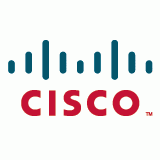Wednesday, June 11, 2014: According to the Cisco® Visual Networking Index™ Global Forecast and Service Adoption for 2013 to 2018, global Internet Protocol (IP) traffic will increase nearly three-fold over the next five years due to more Internet users and devices, faster broadband speeds and more video viewing. Global IP traffic for fixed and mobile connections is expected to reach an annual run rate of 1.6 zettabytes* – more than one and a half trillion gigabytes per year by 2018. The projected annual IP traffic for 2018 will be greater than all IP traffic that has been generated globally from 1984 – 2013 (1.3 zettabytes).
The composition of IP traffic will shift dramatically in the coming few years. During the forecast period, the majority of traffic will originate from devices other than personal computers (PCs) for the first time in the history of the Internet. Wi-Fi traffic will exceed wired traffic for the first time and high-definition (HD) video will generate more traffic than standard definition (SD) video.
The Internet of Everything is also gaining momentum and by 2018 there will be nearly as many machine-to-machine (M2M) connections as there are people on earth. Smart cars will have nearly four M2M modules per car.
India Specific Findings:
-In India, there will be 1.5 billion networked devices in 2018, up from 1 billion in 2013. In 2013, 24 percent of IP traffic in India originated from non-personal computer (PC) devices; however, by 2018 the non-PC share of IP traffic will grow to 65 percent. Other devices/connections will have higher traffic growth rates over the forecast period, including TVs (from 13 percent to 14 percent), smartphones and tablets (from 11% to 51%) and machine-to-machine (M2M) modules (from 0.3% to 1%).
-In India, Internet traffic will grow 5.5-fold from 2013 to 2018, a compound annual growth rate (CAGR) of 41 percent and reach 101 Petabytes per day in 2018, up from 20 Petabytes per day in 2013. Indian Internet traffic in 2018 will be equivalent to 160x the volume of all traffic across the entire Internet in India in 2005. The average Internet traffic will reach 9 Tbps in 2018, the equivalent of more than 7.8 million people simultaneously streaming Internet HD video.
-In India, mobile data traffic will grow 24-fold from 2013 to 2018, a CAGR of 88 percent, and reach 1.2 Exabytes per month in 2018, up from 52 Petabytes per month in 2013. Overall, mobile data traffic in 2018 will be equivalent to 55x the volume of the entire Indian Internet in 2005.
-In India, IP video traffic will grow 8-fold from 2013 to 2018, a CAGR of 51 percent, and reach 2.7 Exabytes per month in 2018, up from 341 Petabytes per month in 2013. In India, IP video will be 75 percent of all IP traffic in 2018, up from 50 percent in 2013.
-In India, 70 billion minutes (133,013 years) of video content will cross the Internet each month in 2018. That’s more than 26,600 minutes of video streamed or downloaded every second. Internet video traffic will grow 9-fold from 2013 to 2018, a CAGR of 55 percent. Total Internet video traffic (business and consumer, combined) will be 72 percent of all Internet traffic in 2018, up from 45 percent in 2013. Internet Video-to-TV traffic is expected to increase 10-fold between 2013 and 2018.
-In India, the average fixed broadband speed will grow 3-fold from 2013 to 2018, from 3 Mbps to 9 Mbps, and the average mobile connection speed will grow 3-fold from 2013 to 2018, reaching 1,598 kbps in 2018. The average Internet user will generate 4.7 gigabytes of Internet traffic per month in 2018, up 117 percent from 2.2 gigabytes per month in 2013, a CAGR of 17 percent.
World Cup 2014 to Drive Internet Traffic
With the FIFA World Cup 2014 set to begin on Thursday (June 12), millions of people are expected to view games and/or highlights via the Internet. Video streaming and IP broadcast of the World Cup is anticipated to generate 4.3 exabytes of IP traffic, which is three times the amount of monthly IP traffic currently generated by Brazil (this year’s World Cup host city). In addition, Internet traffic generated by the 60,000 people in a stadium and traveling to games is forecasted to surpass the busy-hour** traffic from all 94 million smartphone subscribers in Brazil.
Global IP traffic is expected to reach 132 exabytes per month by 2018, which is the equivalent to:
8.8 billion screens streaming the FIFA World Cup final game in Ultra-HD/4K at the same time;
5.5 billion people binge-watching “Game of Thrones” Season 4 via video-on-demand in HD or 1.5 billion watching in Ultra-HD/4K;
4.5 trillion YouTube clips; and
940 quadrillion text messages.
This updated Cisco VNI Forecast includes global fixed IP traffic growth and service adoption trends complements the Cisco VNI Global Mobile Data Traffic Forecast released earlier this year.
*A zettabyte is equal to 1,000 exabytes and precedes the yottabyte unit of measurement.
** Busy-hour is a 60-minute period with the maximum total traffic load in a given 24-hour period.
Key Findings: Global Traffic Projections and Service Adoption Drivers
1) IP Traffic
·Mobile and portable devices other than PCs will drive the majority of traffic by 2018. In 2013, 33 percent of IP traffic originated with non-PC devices, however, by 2018, the non-PC share of IP traffic will grow to 57 percent. PC-originated traffic will grow at a 10 percent compound annual growth rate (CAGR), while other devices/connections will have higher traffic growth rates over the forecast period including TVs (18 percent), tablets (74 percent), smartphones (64 percent) and M2M connections (84 percent).
·Busy-hour Internet traffic is increasing faster than average Internet traffic. Busy-hour Internet traffic increased 32 percent in 2013, compared to 25 percent growth in average Internet traffic.
·Traffic originating in metro networks surpassed traffic traversing long-haul links in 2013. Metro traffic will grow nearly twice as fast as long-haul traffic from 2013 to 2018. This growth is due in part to content delivery networks, which will carry more than half of total Internet traffic by 2018.
2) IP Video
·IP video will be 79 percent of all IP traffic by 2018, up from 66 percent in 2013.
·Ultra HD video will account for 11 percent of IP video traffic by 2018, up from 0.1 percent in 2013. HD video will account for 52 percent of IP video traffic by 2018 (up from 36 percent) and SD will account for the remaining 37 percent (down from 64 percent).
3) IP Traffic by Access Type
·Wi-Fi and mobile-connected devices will generate 61 percent of IP traffic by 2018. Wi-Fi will be 49 percent and cellular will be 12 percent. Fixed traffic will be only 39 percent of total IP traffic by 2018. In comparison, Wi-Fi was 41 percent; cellular was 3 percent; and fixed was 56 percent in 2013.
·Wi-Fi and mobile-connected devices will generate 76 percent of Internet traffic by 2018 Wi-Fi will be 61 percent and cellular will be 15 percent. Fixed traffic will be only 24 percent of total Internet traffic by 2018. In comparison, Wi-Fi was 55 percent; cellular was 4 percent; and fixed was 41 percent in 2013.
4) Devices/Connections
·By 2018, there will be nearly 21 billion global network connections (fixed/mobile personal devices, M2M connections, et al.), up from about 12.4 billion connections in 2013.
·There will be 2.7 networked devices/connections globally per capita by 2018, up from 1.7 per capita in 2013.
·There will be 7.3 billion M2M connections globally, or nearly one M2M connection per capita, based on a 7.6 billon population by 2018.
·There will be 10 billion IPv6-capable fixed and mobile devices in 2018, up from 2 billion in 2013.
5) Increasing Broadband Speeds
·Global broadband speeds will reach 42 Mbps by 2018, up from 16 Mbps at the end of 2013.
·The majority of broadband connections, estimated at 55 percent, will be faster than 10 Mbps by 2018. Average broadband speeds in Japan and South Korea will approach 100 Mbps by 2018.
6) Advanced Service Adoption
·Online video will be the fastest growing residential internet service with a CAGR of 10 percent from 2013-2018, growing from 1.2 billion users to 1.9 billion users by 2018.
·Mobile location-based services will be the fastest growing consumer mobile service with a CAGR of 36 percent from 2013 to 2018, growing from 236 million users in 2013 to more than 1 billion users by 2018.
·Desktop and personal videoconferencing will be the fastest growing business Internet service with a CAGR of 45 percent from 2013 to 2018, growing from 37 million users in 2013 to 238 million users by 2018.
Key Regional & Country Growth Projections
·The Asia-Pacific (APAC) region will generate the most IP traffic by 2018, with 47.6 exabytes (36 percent of the global IP traffic) per month. With the world’s largest population and the most devices/connections, APAC’s increased network usage will maintain its position as the top traffic-generating region through 2018.
·The Middle East and Africa (MEA) region will continue to be the fastest growing IP traffic region from 2013 – 2018 with a five-fold growth and a 38 percent CAGR.
·By 2018, the highest traffic-generating countries will be the United States with 37 exabytes per month and China with 18 exabytes per month.
·The countries with the fastest IP traffic growth will be India with a 39 percent CAGR from 2013 to 2018, followed by Indonesia with a 37 percent CAGR.
Cisco VNI Forecast Implications for Service Providers
·Service provider networks must adapt to the increasing number of devices, such as tablets, smartphones and M2M connections, that will need to be authenticated to access fixed/mobile networks with enhanced security and service prioritization.
·The evolution of advanced video services, such as HD/ultra HD video, may create new bandwidth and scalability requirements for service providers. Residential, business and mobile consumers continue to have strong demand for advanced video services across all network and device types with quality of service, convenience, and price as key factors for success.
·Continued business video adoption, such as HD and web-based video conferencing and business VoD may prompt greater growth in network virtualization and leveraging the Internet for video transmission with network ramifications for service providers and over-the-top providers.
·4G network growth and service adoption may grow faster as mobile users continue to demand similar service and content experiences from their fixed and mobile networks. Wi-Fi is going to become increasingly important in providing offload for mobile devices and connectivity for a growing array of portable devices and M2M connections.
·IP networks must be intelligent and flexible enough to support the constant introduction of new/updated applications for fixed and mobile networks. Many service providers are actively collaborating with application developers to differentiate their services.
Cisco VNI Methodology
The Cisco VNI Global Forecast and Service Adoption for 2013 to 2018 rely upon independent analyst forecasts and real-world mobile data usage studies. Upon this foundation are layered Cisco’s own estimates for global IP traffic and service adoption. A detailed methodology description is included in the complete report.
Supporting Quote
·Doug Webster, Vice President of Products and Solutions Marketing, Cisco
“Our first Cisco Visual Networking Index nine years ago established the zettabyte as a major milestone for global IP traffic. Today, we are firmly in the ‘Zettabyte Era’ and witnessing incredible innovations and shifts in the industry. The reality of the Internet of Everything (IoE), the increasing demand for network mobility, and the emergence of 4K video are among the key trends highlighted in this year’s forecast that represent significant opportunities for service providers today and in the immediate future.”
Source : Efytimes








